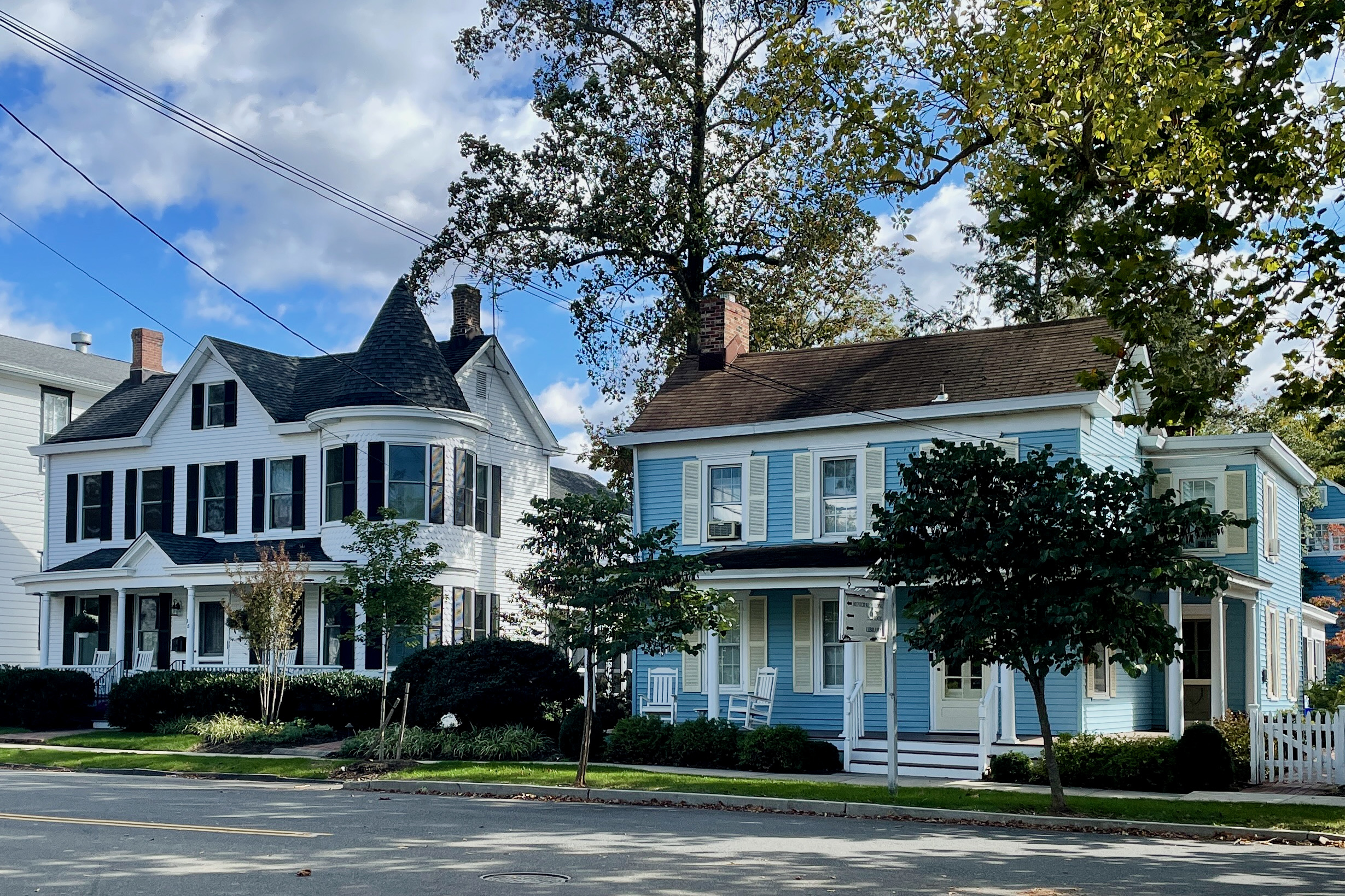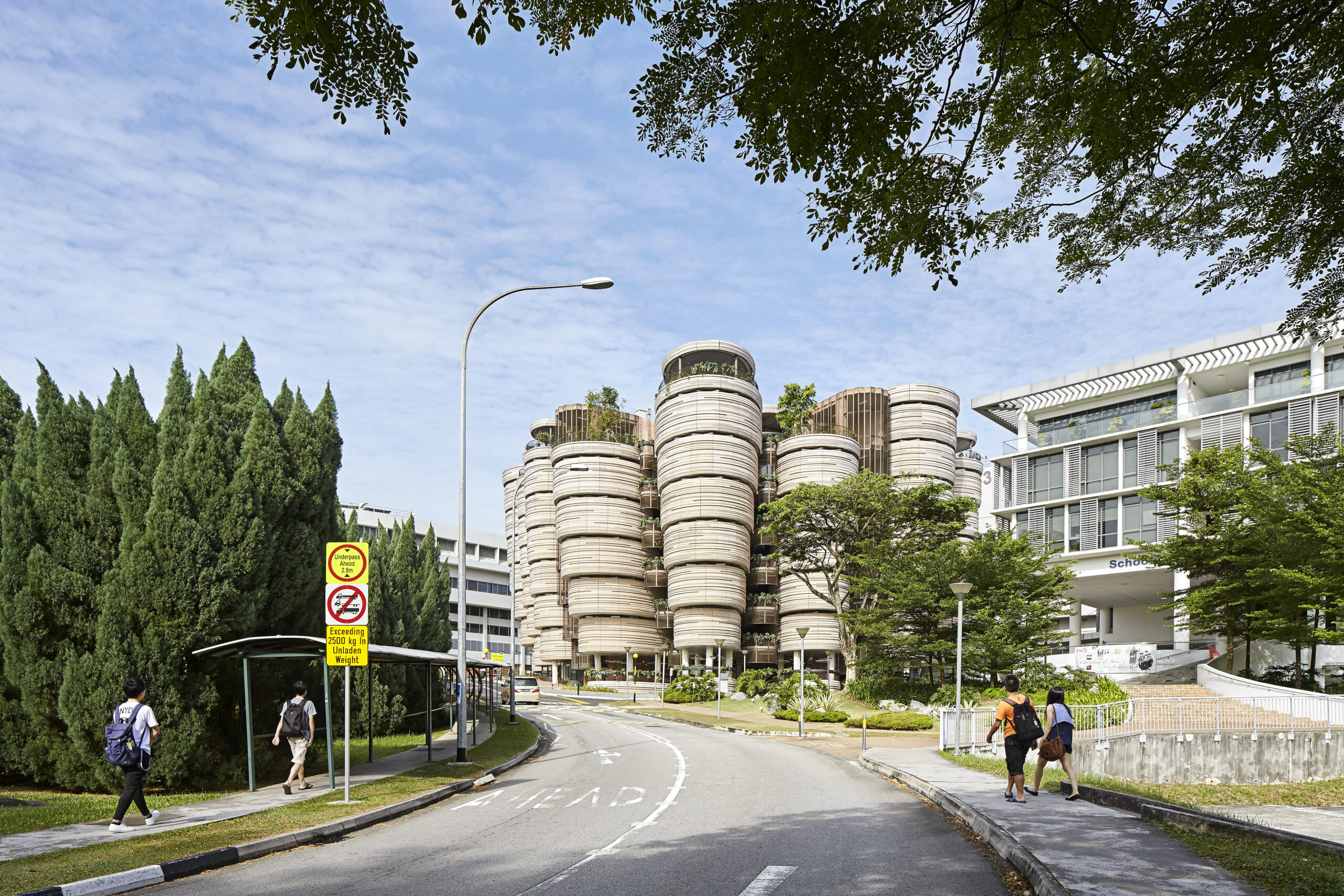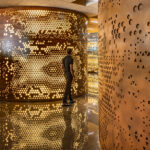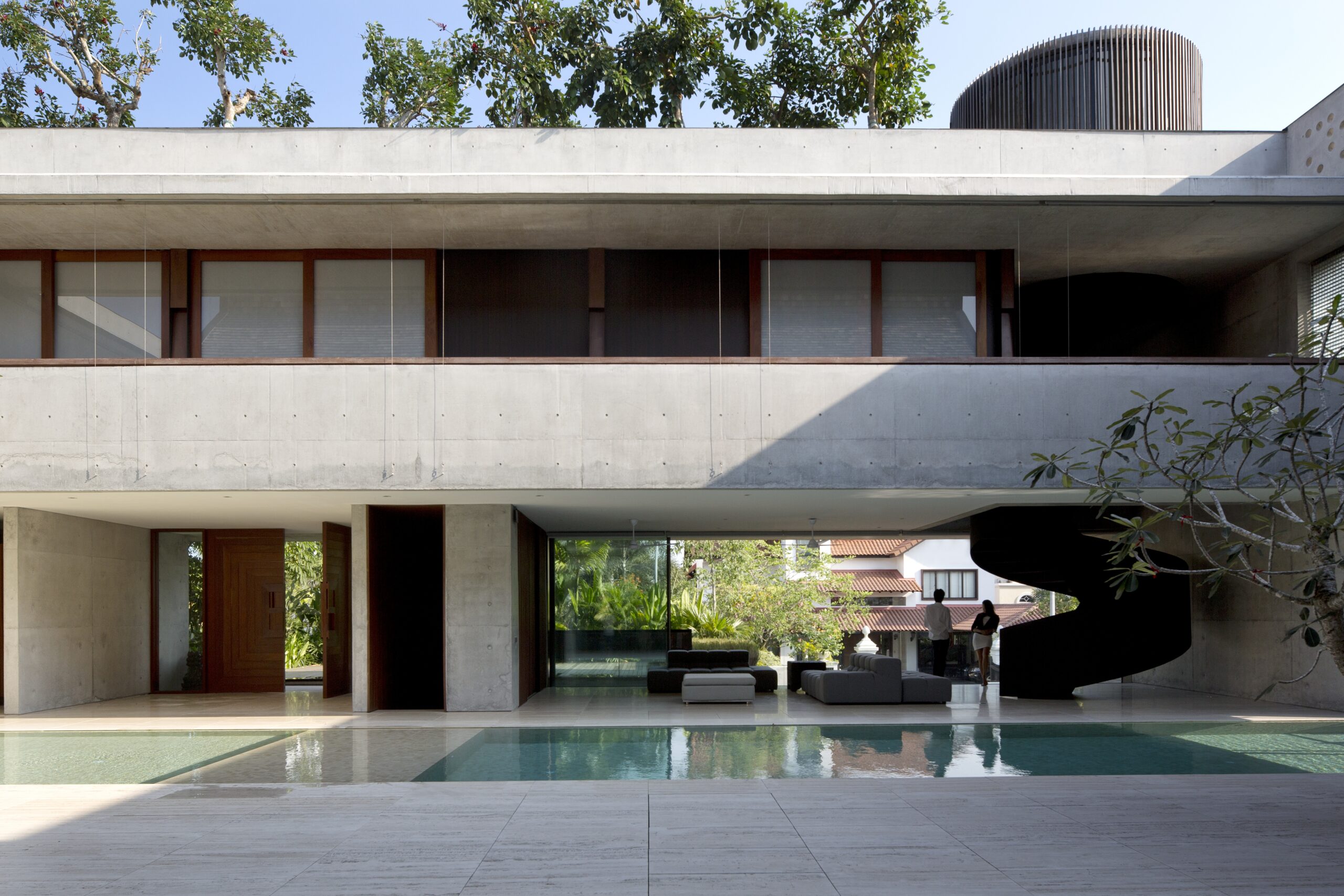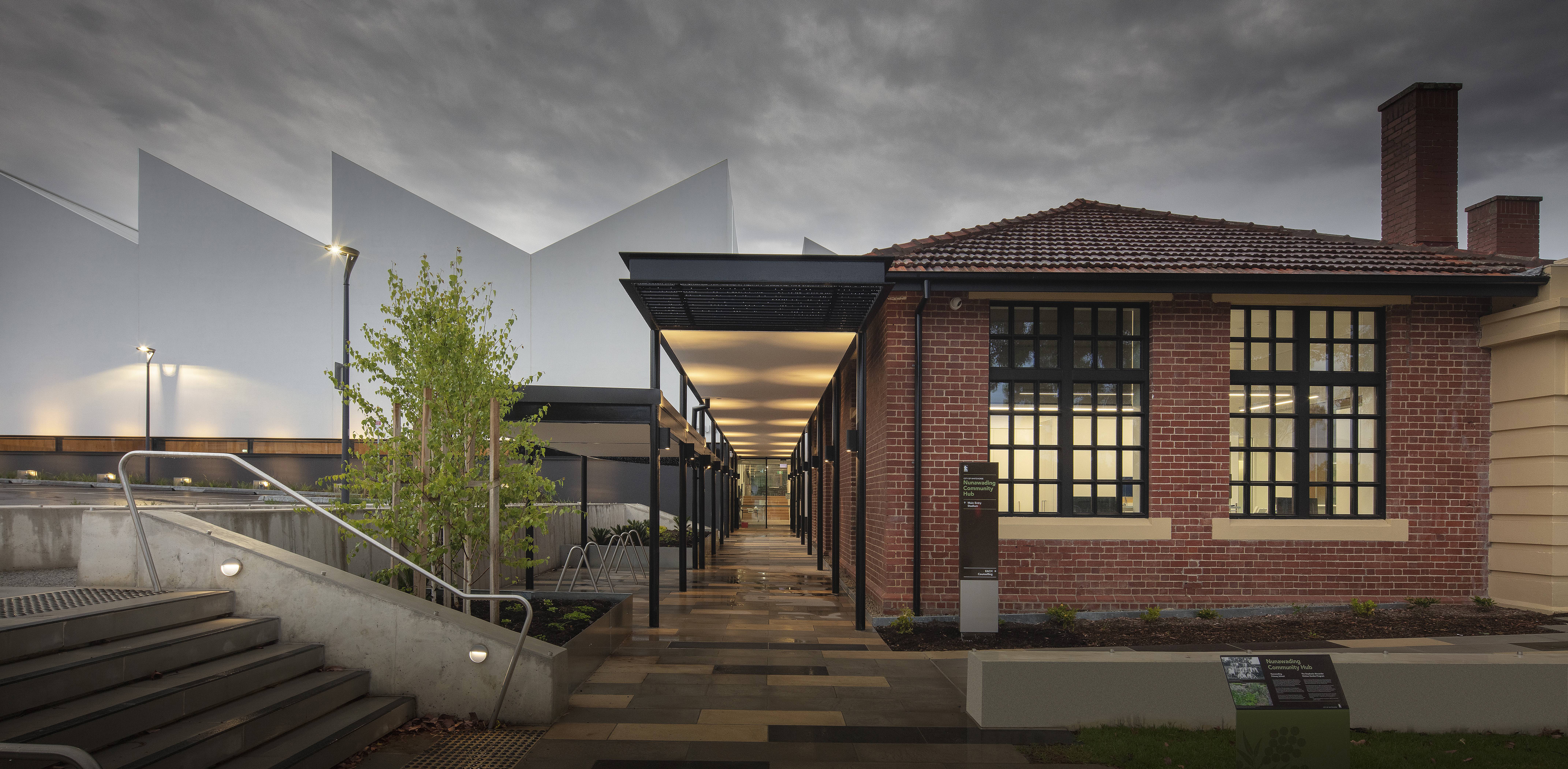Architects: Want to have your project featured? Showcase your work through Architizer and sign up for our inspirational newsletters.
As a kid, all the buildings I loved were old. I grew up in Cranbury, New Jersey, a small town best known for its Rockwellesque Main Street lined with historic homes. Think white colonials with wrap-around porches adorned with patriotic bunting, wooden churches with dramatic steeples, and bronze placards from the local historical society indicating where the local mill, general store, and cinema once stood.
Many of my friends lived in homes built in the 19th century, which might not seem like a big deal to our European readers, but for an American child, this was enough to convey an Aura of History. I loved these houses, with their scratched hardwood floors, crooked ceilings and doors that never quite closed. Teachers at Cranbury School told us how George Washington once enjoyed a meal at the still-operational Cranbury Inn. On my walk home from school, I often passed through Brainerd Cemetery and visited the eroded gravestones of Revolutionary War veterans. Ghosts were in the air here — in a good way. They gave the town a sense of place amid the anonymous sprawl of suburban New Jersey.
The Aura of History was foundational to my early interest in architecture and design. As a kid I had a strong sense that some buildings evoked a sense of place and that others did not, and I resented the soullessness of much of the surrounding suburban landscape, with its endless parking lots and charmless big box stores.
The point of all of this is to say that I understand, emotionally, where classicists are coming from when they lament the legacy of modernism, especially the International Style, which they (half-correctly) blame for having an anonymizing effect on cities around the world. I even understand the bitterness that classical architects feel toward their marginality in the profession. (When was the last time a classicist won the Pritzker Prize?) And to be clear, there is a lot of bitterness there.
The classical alternative to the Pritzker Prize is the Richard H. Driehaus Award. Presented by the University of Notre Dame, the annual award grants a $200,000 prize to “a living architect whose work embodies the highest ideals of traditional and classical architecture in contemporary society, and creates a positive cultural, environmental and artistic impact.” The award aligns with the “classical and urbanist curriculum” of the University of Notre Dame School of Architecture, which “celebrat[es] and advanc[es] the principles of the traditional city.” The award was established in 2003 by the late financier Richard H. Driehaus who made no bones about his dissatisfaction with the state of architecture.
“I believe architecture should be of human scale, representational form and individual expression that reflects a community’s architectural heritage,” Driehaus explained when asked why he established the prize. “There is a delight, proportion and harmony in classical architecture that I wasn’t finding in the contemporary buildings coming up around me in Chicago.”
Driehaus’s criticism of modern architecture was not unique — nor was it new. In one form or another, these same themes have been expressed for over half a century by figures as varied as Jane Jacobs, Roger Scruton and Thomas Heatherwick. In his recent book Humanize, which I reviewed for Architizer last month, Heatherwick refers to the architectural profession as a “cult” that is bizarrely committed to a minimalist aesthetic template established in mid twentieth century despite the fact that survey after survey shows that the public does not like these kinds of buildings.
While Heatherwick shares the classicist critique of modernism, he is not a classicist. For him, the solution is not to return to tradition, but to take a more critical look at contemporary building practices and strive to find new ways to achieve that sense of place, that je ne sais quoi, I once admired in my little picturesque hometown. One can see this philosophy at work in the playful nature of many of Heatherwick’s best known buildings, like Learning Hub South in Singapore, which locals refer to as the “dim sum basket building” due to its resemblance to the steamer baskets used to serve dim sum. In Heatherwick’s language, this building is “human” in the way an anonymous, merely functional academic building with a glass or metal façade would not be.
Heatherwick’s ideas are themselves something of a throwback to the views of Robert Venturi and Denise Scott Brown, who helped established postmodern architecture in the 1970s by critiquing the “less is more” ethos of the High Modernists. As the duo put it in their book Learning from Las Vegas, “anomalies and uncertainties give validity to architecture.” I love that. It speaks to the importance of local texture and idiosyncrasy that led me, as a young man, to prefer old houses to new ones and to find homogenous chain restaurants to be not just ugly but depressing.
I am going to name the Venturi-Brown-Heatherwick position left populism, even though the sensibility is aesthetic rather than political. Like the Jacobins who sat on the left hand side of the National Convention during the French Revolution — establishing the terms “left” and “right” to describe the political spectrum — the architectural left populists are discontented with the present, but committed to a vision of the future that will be different from the past. Architectural left populism encourages a bricolage approach to design and urbanism, drawing on both the modernist tradition and earlier periods in architecture to create buildings that speak to the present. It is not the same as right populism, which is a point of view I see reflected in the mission statement of the Driehaus Prize, with its repeated use of the word “traditional.” (However, to the Driehaus’s credit, the award has been grants to architects I would consider left populists as well, including Michael Graves in 2013.)
Again, the way I am using the words left and right here is not strictly political. However, it is not not political either. Architectural right populism is often, but not always, associated with political conservatism. King Charles is probably the most infamous right populist in architecture, having gone so far as to construct a whole town according to classical architectural principles. Indeed, Charles’s Poundbury is a good example of the right populist viewpoint in action. Harmony, balance, a sense of cohesiveness that never crosses over into monotony — all of this is achieved. However, in my view, there is something bleak about this contrived little town. With everything arranged just so, according to historical architectural styles, one intuits not merely reverence for the past, but anxiety about the present.
Another person you might have heard of, Donald Trump, is an architectural classicist too — despite the fact that he has built a bunch of shiny glass towers. In 2020, then President Trump issued an executive order banning the construction of new federal buildings that were not constructed in one of six recognized styles: “Neoclassical, Georgian, Federal, Greek Revival, Beaux-Arts, and Art Deco.” As with the construction of Poundbury, the goal here was not just to elevate classical architecture, but to make a statement against modernism. And for conservatives, modernism is not just a style, but an embodiment of progressive ideals.
The work of Peter Pennoyer, the most recent winner of the Driehaus Prize, is a good example of classical architecture at its best. The private homes he has designed are absolutely magnificent, blending harmoniously into their context whether that is a brownstone block in Manhattan or a marshy estate in Maine. He achieves this, he says, through paying attention to classical principles such as proportion, harmony and beauty — ideals that Vitruvius knew well but that modern architecture has not only overlooked but, in Pennoyer’s account, actively suppressed.
“So I graduated from college in 1981, architecture school in 1984. And there were people who were more excited about Modernism, certainly the faculty,” Pennoyer explains in a recent interview with Common/Edge. “You heard things like, ‘Well, your symmetry is fascist.’ Another favorite of mine, which has stuck in my mind forever: A professor looked at a beautiful arch for a subsidized housing scheme, one of our studio problems. He looked at this arch and said, ‘What a pity. Because where there are arches, there are princes, and where there are princes, there are slaves.’”
Pennoyer’s anecdote reflects a number of common right populist tropes. He blames modern architecture’s blandness on the revolutionary fervor of professors who express their radicalism in aesthetics because they cannot do so in politics. They distrust beauty because they distrust everything, having totally imbibed the hermeneutics of suspicion.
It’s a caricature, but is it true? Maybe a little?
Asked in this same interview if beauty is subjective, Pennoyer has an interesting response: “I think there is an absolute standard of beauty around which we can all, most people, agree — until they go to architecture school or study architectural theory. I think it’s educated out of people. There’s much more consensus and basic human instinct for beauty, proportion, and harmony than we’re led to believe. There are absolute values of beauty.”
Pennoyer’s view is that architecture schools — the elites — have trained people out of their instinctive understanding of what they like. Again we see that his view is not only conservative but populist. He presents himself as a champion of common sense over expertise. And like the right populism we see in politics, this perspective has a dark side.
If architects, en masse, accepted the right populist view and decided to stick to established and recognizable styles, the profession would be giving up on the possibility of doing something new. It would come to resemble the American motion picture industry, which for the past decade has invested heavily in sequels and remakes at the expense of original projects. These films can be enjoyable, but they are never masterpieces. Inversely, most art house films are awful, but every once in a while this scene produces a work that is truly special and enduring. Maybe flawed work is the cost of innovation.
In any event, the right populists are wrong that modernism’s shortcomings can only be addressed by returning to the past. There are other ways to address these issues, ones that don’t involve architecture becoming trapped in stylistic and ideological stasis. Heatherwick’s book Humanize proposes a way of thinking about architecture that is neither cold nor sentimental. It continues a tradition that has been overlooked for too long and has not been named until now: left populist architecture.
Cover Image: Landscape with Classical Architecture by a Lake, drawing, anonymous, French, 17th century (MET, 1972.118.15) via Wikimedia Commons
Architects: Want to have your project featured? Showcase your work through Architizer and sign up for our inspirational newsletters.

